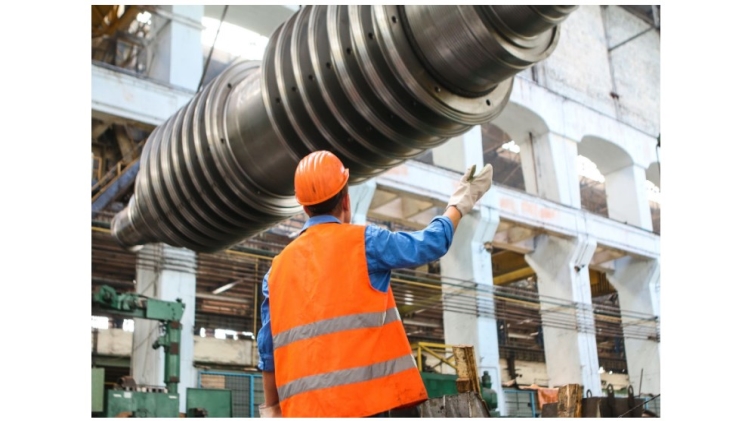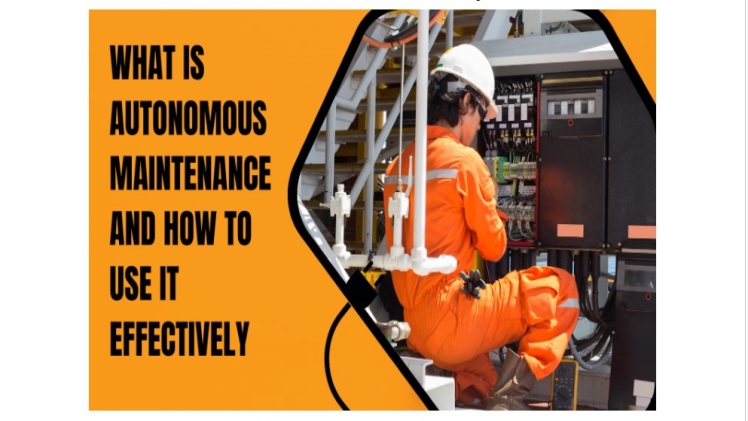Businesses cannot function without regular maintenance, despite the time and expense it involves. To save time and money, many companies have undertaken their maintenance.
Companies looking to improve their technology infrastructure while lowering risk exposure and saving money should consider automated maintenance. Maintenance tasks performed manually can be costly, time-consuming, and ineffective. Furthermore, it puts your employees at risk of injury.
Maintaining your essential systems autonomously will ensure they operate efficiently and effectively.
What Is Autonomous Maintenance?
Autonomous maintenance involves giving operators basic maintenance tasks. Thus, dedicated maintenance technicians can focus on more complex tasks.
Machine operators track their equipment and perform minor maintenance tasks during autonomous maintenance. Autonomous preventive maintenance keeps machines and equipment running.
Maintenance and upkeep are carried out automatically rather than by a technician. The primary users of an asset are put front and center and are the ones who drive the maintenance program for the asset. Implementing autonomous maintenance gives operators more control and pride in their work. Automating routine maintenance frees up time for more important tasks.
Why Is Autonomous Maintenance Beneficial?

Maintenance is often seen as a necessary evil, but it can be much more than that. Maintenance can be one of your organization’s most valuable assets with the right tools and processes.
Here are some of the benefits of using autonomous maintenance:
Keep Equipment Clean and Lubricated
Maintenance technicians must perform some significant repairs simultaneously. Many fail to perform routine maintenance, such as cleaning and lubricating. The operator efficiently manages autonomous maintenance, ensuring that functions run smoothly.
Creates a Sense of Responsibility and Ownership
Providing employees ownership over their work is one of the most significant benefits. It motivates employees to perform regular inspections and routine maintenance tasks independently. Machine operators will learn to ensure smooth operation. Their accountability stems from their sense of responsibility.
Improve Employee Engagement
Autonomous maintenance boosts employee engagement by giving workers more control over their assets. They take pleasure in the joint responsibility of maintaining the property’s value. This contributes to an increase in the organization’s overall levels of productivity.
Reduce Labor Costs
A further benefit of autonomous maintenance is that labor costs are reduced. By automating maintenance, staff members do not have to spend time planning or performing maintenance. This frees up employees to focus on other projects. Automating these jobs lowers costs by reducing worker numbers. Diverting time and energy from less critical tasks helps boost profits and lower operating costs.
Identify Issues Before They Worsen
Minimal issues can be detected in their early stages through autonomous maintenance. Operators recognize early warning signs of machine deterioration. Corrective measures can be implemented before catastrophic failure occurs.
Enhance Overall Safety
Maintaining and organizing equipment reduces the risk of injuries caused by clutter or scattered tools. Autonomous maintenance ensures a clean and safe working environment. This change will enhance and improve the working environment for everyone.
The 7 Steps to Effective Maintenance Automation

Maintenance is an essential part of the operations management process. Maintenance planning is often overlooked, but automating maintenance correctly is crucial.
Perform autonomous maintenance by following these seven steps to enjoy its benefits.
Step 1: Increase Knowledge of Operators
Learning how to use equipment and using it are two very different things. The success of automated maintenance depends on its operators’ understanding.
Operators should be trained and tested to ensure they know how their machines work. You must understand how the machines work and the equipment issues to do this. Training must focus on recognizing and correcting abnormalities. Furthermore, the training establishes optimal conditions and recognizes deviations.
Step 2: Perform Initial Cleaning and Inspection
Clean the apparatus of any dust and dirt present, and examine every component for any signs of damage. Ensure the wiring, motors and other components work well. Using these parts will ensure that you catch potential issues early on and that they function correctly.
Step 3: Eliminate Contamination Sources
Maintenance must follow thorough cleaning and restoration. Maintaining new equipment requires eliminating contamination sources. If the workstations are kept clean, it is easier to prevent contamination at workstations.
Lockout/tagout (LOTO) procedures may be needed when cleaning equipment to keep workers safe. Depending on the type of equipment, this requirement may vary.
Step 4: Set Lubrication and Inspection Standards
Creating cleaning, inspection, and lubrication standards begins with documentation. Standards should specify cleaning, lubricating, and delegating maintenance duties.
Identifying maintenance tasks requires the use of some tools and processes. Use checklist tools to help operators remember what maintenance tasks to do. Once the standards have been developed, they must be documented and placed so operators can easily access them. You can deploy your standards in the form of a checklist for easy comprehension.
Step 5: Perform Inspections and Monitoring
With the standards, machine operators can begin autonomous maintenance for greater efficiency. Identify ways to improve your maintenance program by tracking and monitoring these responsibilities. Furthermore, redundant obligations can be removed.
Operators inspect for cracks, tighten bolts, and check lubrication levels. Adjustments include tension measurements, sensor regulation, and other similar tasks.
Step 6: Manage Visual Maintenance
Manufacturers must also organize the work area to make maintenance easier. Install visual aids to simplify maintenance tasks. Visual aids help operators understand equipment, labeling, and fluid flow.
By using visual aids, operators and other workers can remember the steps to follow. It will be easier for operators to perform maintenance tasks.
Step 7: Be Continuously Improving
Autonomous equipment changes processes, equipment, and operators continuously. Regularly reviewing standardized processes can help your business run smoothly.
Maintaining a failure log helps maintenance engineers design easier-to-maintain machines. Team leaders and maintenance technicians can continually audit operators’ work to improve it. This allows them to suggest ways operators can improve and praise good work.
Conclusion
Taking advantage of the current business climate requires autonomous maintenance. With autonomous maintenance, security is improved, costs are reduced, and output increases.
Automated maintenance increases product and service reliability. In an environment of quality control, the frequency of product recalls, and warranty claims fall. Customers’ satisfaction will increase, too, which is crucial to your business’ success.

